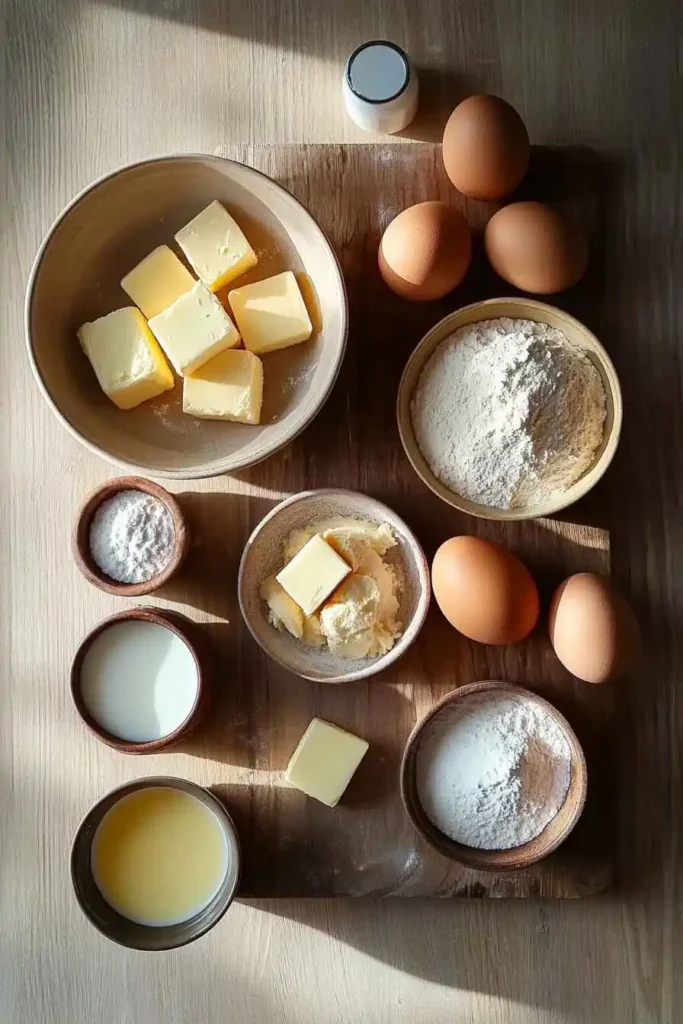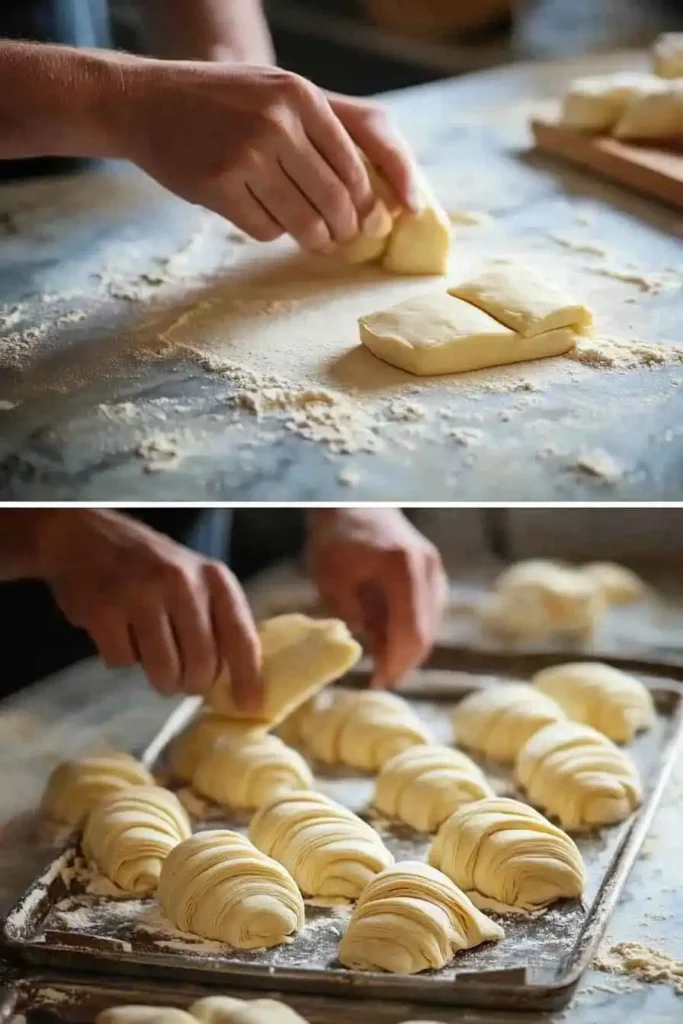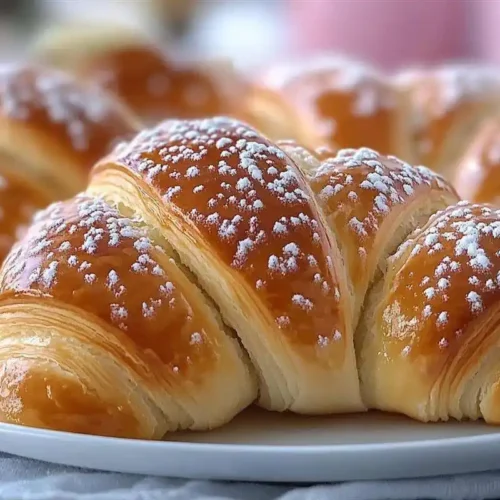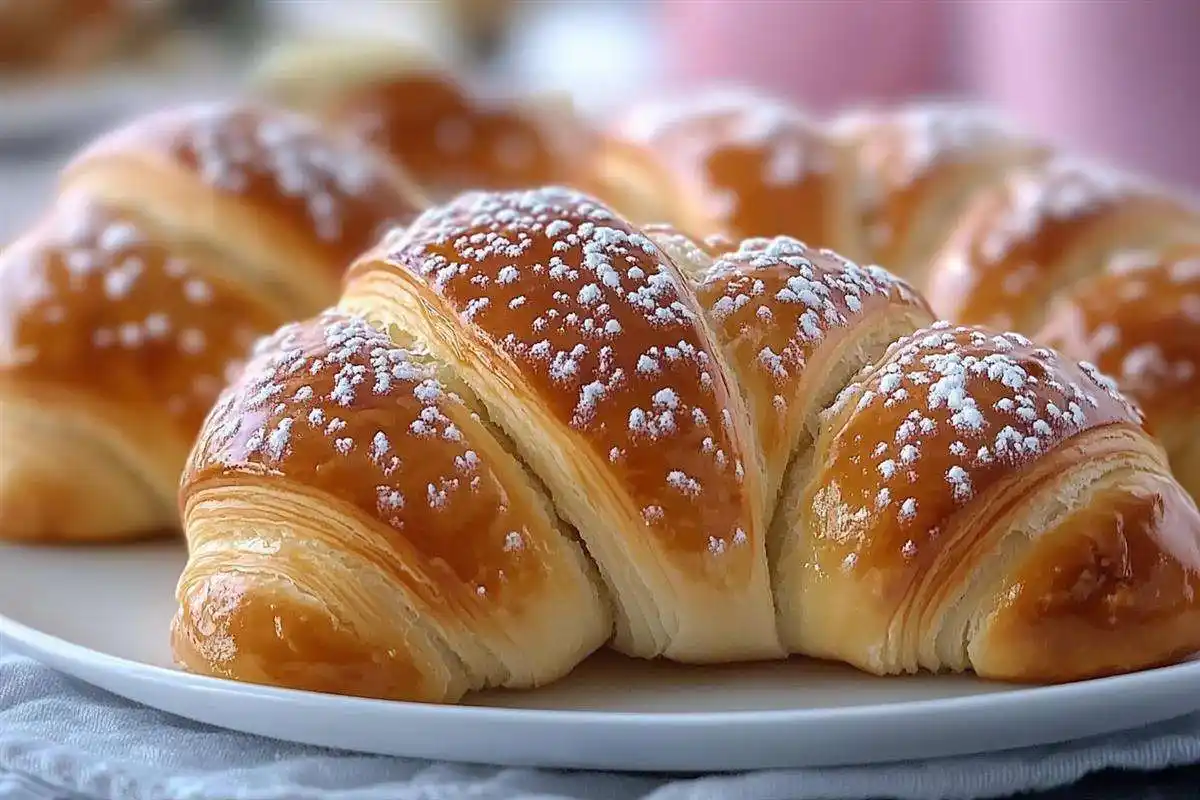Imagine a chilly morning in a small Swiss village. A warm bakery fills the air with the aroma of freshly baked pastries. This gipfeli recipe transforms simple ingredients into a delightful treat that invites you to experience Swiss tradition at home.
Cooking Time: 45 minutes
Servings: 12
Table of Contents
Engaging Introduction
This gipfeli recipe is unique because it balances simple ingredients with traditional techniques. Basic items such as all-purpose flour, unsalted butter, and active dry yeast are transformed into a pastry with delicate, flaky layers and a rich, buttery taste. Have you ever wondered how a few ingredients can create magic? This recipe will show you the art behind every fold and turn of the dough.
Ingredient List with Exact Measurements
Below is a table of ingredients measured using U.S.-standard units. Each ingredient is chosen for its role in creating the perfect texture and flavor. Some substitutions are provided where possible.
| Ingredient | Amount | Notes |
|---|---|---|
| All-purpose Flour | 4 cups | Sifted for a lighter texture |
| Active Dry Yeast | 2 1/4 tsp | One packet |
| Unsalted Butter | 1 cup (2 sticks) | Cold and cubed for laminating |
| Warm Milk | 1 cup | About 110°F |
| Granulated Sugar | 2 tbsp | Or substitute with 1.5 tbsp honey |
| Salt | 1 tsp | Essential for flavor balance |
| Egg | 1 | For egg wash to add shine |

Step-by-Step Instructions
Follow these steps to create your very own Swiss gipfeli. The process is simple, and the results are remarkable.
1. Preparing the Dough
- Mix the Dry Ingredients:
In a large bowl, combine the sifted flour, granulated sugar, and salt. Stir until evenly mixed. The dry mix creates the foundation of the dough. - Activate the Yeast:
Pour the warm milk into a small bowl. Add the active dry yeast and let it sit for 5 minutes until frothy. This step confirms that the yeast is alive and ready to help the dough rise. - Combine the Mixtures:
Add the yeast mixture to the dry ingredients. Stir gently until a soft dough forms. “A good dough is the start of a great pastry.” - Knead the Dough:
Turn the dough onto a lightly floured surface. Knead for 8-10 minutes using short, firm strokes. The kneading process builds gluten, giving the dough its elasticity.
2. Incorporating Butter for Flaky Layers
- Prepare the Butter:
Ensure that your unsalted butter is cold and cut into small cubes. Cold butter helps create the flaky layers that define gipfeli. - Lamination Process:
Roll the dough into a rectangle about 1/4-inch thick. Evenly distribute the butter cubes in the center. Fold the dough over the butter. Then, gently roll the dough to form a larger rectangle. Repeat this folding and rolling process 2–3 times. Each fold increases the number of layers, resulting in a light, airy texture. - Rest the Dough:
Cover the dough with a clean cloth and let it rest for 15 minutes. Resting allows the gluten to relax and the butter to firm up again, which is vital for a crisp final pastry.
3. Shaping the Gipfeli
- Roll and Cut:
Roll the rested dough into a thin sheet on a lightly floured surface. Using a sharp knife or pizza cutter, trim the dough into long triangles. This step prepares the dough for its classic crescent shape. - Form the Crescents:
Gently roll each triangle from the wide end towards the tip. This motion forms the signature crescent shape. Be careful not to compress the layers too much. - Egg Wash:
Place the shaped gipfeli on a baking sheet lined with parchment paper. Beat one egg lightly and brush the surface of each pastry. The egg wash provides a subtle shine and helps achieve an even, golden brown finish during baking.

4. Baking Guidelines
- Preheat the Oven:
Set your oven to 400°F. Preheating is key to ensuring that your gipfeli bake evenly. - Bake to Perfection:
Place the baking sheet in the center of the oven. Bake for 15–20 minutes until the pastries are a beautiful golden brown. Keep a close eye on them to avoid over-baking. - Cooling:
Remove the gipfeli from the oven and allow them to cool on a wire rack for a few minutes. Cooling lets the layers settle, making each bite perfectly crisp and tender.
5. Nutritional Breakdown
A balanced treat like gipfeli can be enjoyed as part of your daily indulgence. Below is an approximate nutritional breakdown per serving.
| Nutrient | Amount per Serving | % Daily Value (approx.) |
|---|---|---|
| Calories | 200 | 10% |
| Fat | 10g | 15% |
| Carbohydrates | 25g | 8% |
| Protein | 5g | 10% |
Note: Nutritional values are estimated and may vary based on ingredient brands and specific preparation methods.
Serving Suggestions & Best Side Dishes
Gipfeli are best enjoyed warm. They taste delightful on their own, yet pairing them with complementary sides can elevate your experience. Enjoy them as a hearty breakfast or a light snack any time of the day.
- Beverage Pairings:
A hot cup of freshly brewed coffee or a robust tea enhances the pastry’s buttery flavor. For a lighter touch, try an iced tea with a splash of lemon. These drinks create a balanced blend with the crisp, flaky layers of your gipfeli. - Side Dish Ideas:
Serve your gipfeli with a fresh fruit salad to add a burst of natural sweetness. A tangy yogurt parfait or a light green salad also complements the rich texture of the pastry. These sides provide a refreshing contrast, making each bite more enjoyable. - Extra Touches:
A dusting of powdered sugar or a drizzle of honey can enhance the natural flavors. You may also experiment with seasonal jams or citrus curds to add a burst of zest that pairs beautifully with the subtle sweetness of the gipfeli.
Storage & Reheating Tips
Proper storage is key to preserving the crisp texture of your gipfeli. Follow these tips to maintain their freshness:
- Storage Guidelines:
Once cooled, place your gipfeli in an airtight container. They can be kept at room temperature for up to two days. For longer storage, refrigerate them for up to three days. Ensure the container is sealed well to lock in the flavor and moisture. - Reheating Instructions:
To reheat, preheat your oven to 350°F. Arrange the gipfeli on a baking sheet and warm them for 5 to 7 minutes. This gentle heat refreshes the layers without making them soggy. Avoid using the microwave as it may compromise their flaky texture. “Reheated gipfeli should taste as delightful as when they were freshly baked.”
For more recipes, follow me on Facebook and Pinterest.
Frequently Asked Questions (FAQs) & People Also Ask
What is the difference between a croissant and a gipfeli?
Croissants and gipfeli both boast flaky layers and a rich, buttery flavor. However, their dough recipes differ. Croissants use a more intricate lamination process with multiple folds and are generally lighter and airier. Gipfeli, on the other hand, have a denser texture and a slightly sweeter profile. The unique technique used in gipfeli creates distinct, crisp layers.
What is a nussgipfel?
A nussgipfel is a variation of the traditional gipfeli that incorporates a rich nut filling. Ground walnuts or hazelnuts, mixed with a hint of sugar and spices, are layered into the dough. This variant adds a crunchy texture and a deep nutty flavor that contrasts beautifully with the soft, buttery layers of the pastry, offering a delicious twist on the classic recipe.
What is a mandelgipfel?
Mandelgipfel is a special version of the gipfeli that emphasizes almond flavor. Ground almonds are incorporated into the dough or used as a filling, imparting a subtle sweetness and a satisfying crunch. Often, the pastry is finished with almond slices on top, giving it a sophisticated taste and texture. This variant is popular among those who enjoy a nutty, aromatic pastry.
What is the recipe for Mangria?
Mangria is an inventive twist inspired by the traditional gipfeli. It retains the classic structure but introduces unique elements like citrus zest and exotic spices. The recipe uses a similar lamination technique with a touch of flavored butter and a hint of cardamom. This blend creates a distinctive aroma and a memorable taste for those looking to try something new.
Conclusion
In summary, this gipfeli recipe combines Swiss tradition with modern baking techniques. The careful preparation from mixing and kneading the dough to the artful lamination and perfect baking results in a pastry that is both delicate and satisfying. Whether enjoyed on their own or paired with your favorite sides, these gipfeli offer a delightful culinary experience.
We invite you to try this recipe in your own kitchen. Share your experiences, leave comments, and let us know how you customized your gipfeli. Your feedback helps build a community of passionate bakers and inspires new variations of this timeless treat.
Try the recipe today and join the conversation. Happy baking, and enjoy every delicious bite of your homemade Swiss classic!

Gipfeli Recipe
Equipment
- Mixing Bowl
- Rolling Pin
- Baking Sheet
Ingredients
Main Ingredients
- 4 cups all-purpose flour sifted for a lighter texture
- 2 1/4 tsp active dry yeast one packet
- 1 cup unsalted butter cold and cubed for laminating
- 1 cup warm milk about 110°F
- 2 tbsp granulated sugar or substitute with 1.5 tbsp honey
- 1 tsp salt essential for flavor balance
- 1 egg for egg wash to add shine
Instructions
- In a large bowl, mix sifted flour, granulated sugar, and salt until evenly combined.
- In a small bowl, dissolve active dry yeast in warm milk and let sit for 5 minutes until frothy.
- Add the yeast mixture to the dry ingredients and stir gently until a soft dough forms.
- Turn the dough onto a floured surface and knead for 8-10 minutes until smooth and elastic.
- Roll the dough into a rectangle and evenly distribute cold, cubed butter in the center.
- Fold the dough over the butter and roll out again, repeating the folding process 2-3 times.
- Cover and let the dough rest for 15 minutes before shaping.
- Roll the dough into a thin sheet and cut into long triangles.
- Roll each triangle from the wide end to form a crescent shape.
- Place shaped gipfeli on a baking sheet lined with parchment paper and brush with egg wash.
- Preheat the oven to 400°F and bake for 15-20 minutes until golden brown.
- Let cool on a wire rack before serving.

